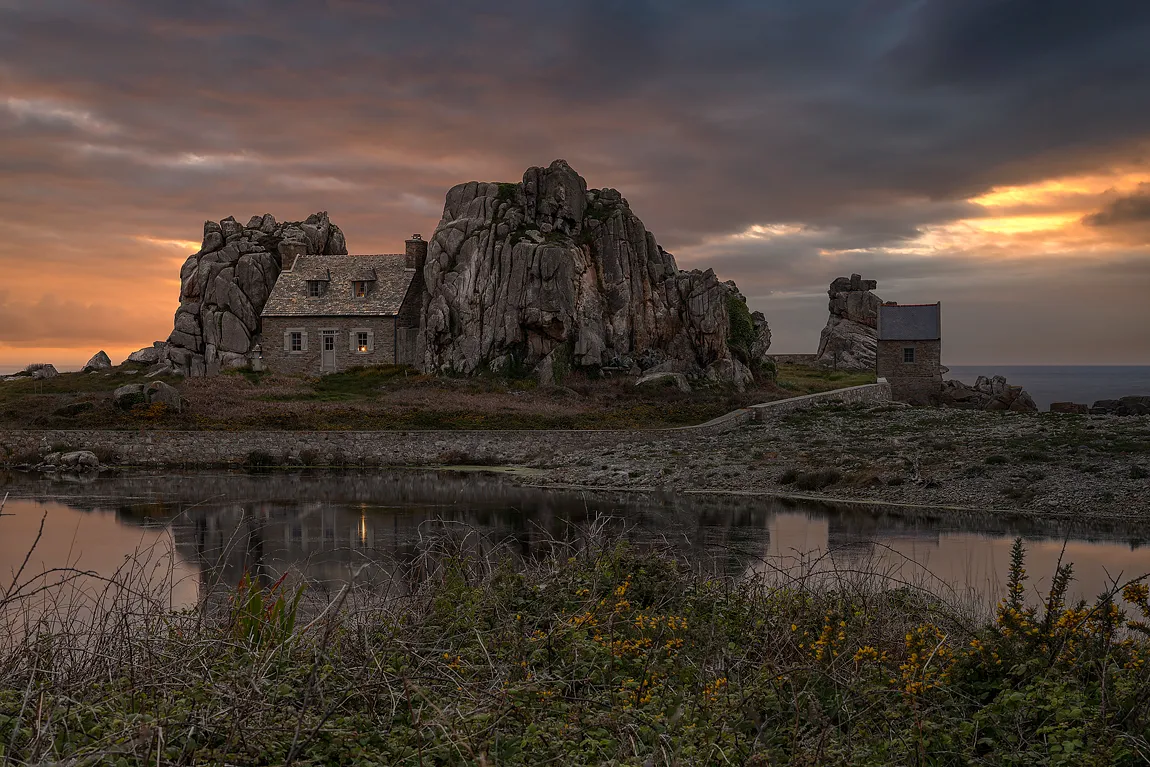Plougrescant is best known for the postcard that went around the world. It represents a small stone house built and embedded between two enormous blocks of granite. Surrounded by a low stone wall, it was built a few meters from the Plougrescant chasm.
This curiosity has become the calling card of a village bordering wild cliffs where we find nature, which, here too, has given free rein to our imagination.
This original place bears the name Castel Meur, which means "Grand Château" (surprising for such a small house) in Breton. It was built in 1861 between the two rocks and faced the sea to protect it from violent storms. In fact, permits did not exist at that time, so you could build your house anywhere.
This little house has resisted the elements for a century and a half now!
Municipal officials, keen to develop the wave of coastal tourism, took over Castel Meur's image and made it the emblem of Pointe de Plougrescant.
A barrier prohibits access to the site well beyond the boundaries of the property, but it can be used for another purpose. Built at the instigation of the League for the Protection of Birds, it is intended to avoid the passage of hordes of tourists with little concern for the integrity of natural spaces. Indeed, a rare bird on these coasts nests there in summer.
Located at the other end of the beach, sinking a little deeper into the sea facing a chaotic mass, the Gouffre opens its mouth like a dragon lurking in the bowels of the pink granite which characterizes the coast. It is made up of a tangle of sections of cliff that collapsed a long time ago.
This place suffers from overcrowding during holiday periods, so I recommend that you go there outside of these periods and observe the house from a certain distance to preserve the tranquility of its inhabitants.


